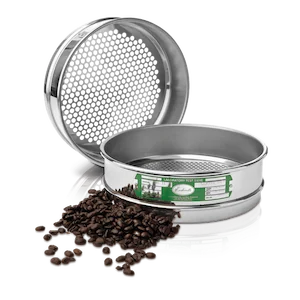Navigating the world of wholesale coffee beans can be as complex and nuanced as the delightful brews they produce. Whether you’re a small café owner, a budding roaster, or a large-scale coffee chain, the quality, and source of your beans can make or break your business. With numerous options from over 70 coffee-producing countries, each offering unique flavors and qualities, the task of sourcing the perfect bean can seem overwhelming.
This guide aims to demystify the process, providing you with the knowledge and tools to source the best wholesale coffee beans for your business. We’ll delve into the intricacies of selecting beans from various regions, understanding the important factors, and how to find a supplier that aligns with your business values. Whether you’re seeking a cooperative of small coffee farms or a third-party importer, we’ve got you covered.
Coffee Flavor Profile
The flavor profile of coffee is a fascinating symphony of factors, each playing a crucial role in the final taste of your brew. Three of the most influential factors are the origin of the coffee, the processing methods used, and the grading of the beans.
The origin determines the terroir and growing conditions, contributing distinct flavor notes, while the processing methods, whether washed, natural, or honey-processed, impart unique characteristics. Moreover, the grading of the beans indicates the quality and consistency of the final product.
Each factor shapes unique flavors, highlighting the need for a careful selection of wholesale coffee bean suppliers to create an outstanding experience for your customers.
Notable Coffee-Growing Countries
The origin of the coffee, both the country and region, plays a significant role in shaping its flavor profile. Factors such as altitude, climate, soil type, and local farming practices all contribute to the unique characteristics of the coffee. Here is a quick outlook on different coffee flavor profiles in some notable coffee-growing countries:
| Country (A-Z order) | Characteristics |
|---|---|
| Brazil | Less-clean after-taste, bittersweet chocolate notes, creamy with low acidity, heavy body. |
| Colombia | Sweet, mellow acidity, smooth and rich, caramel & nut tones. |
| Costa Rica | Mild flavor, clean finish, bright and clean. |
| Ethiopia | Floral aroma, tart and citrusy, bright acidity. |
| Guatemala | Smooth, rich honey notes, aromatic, winey acidity. |
| Hawaii | Creamy and smooth, clean, medium-bodied, chocolate and fruit notes. |
| India | Smooth, creamy and mild, full-bodied, low acidity. |
| Indonesia | Rich and smooth, low acidity, full-bodied. |
| Jamaica | Mellow, balanced, rich. |
| Kenya | Intense acidity, citrus, and berry notes, bright and vibrant. |
| Mexico | Light-medium body, mild acidity, balanced, fruit and spice notes. |
| Nicaragua | Meaty, full-bodied, hazelnut notes. |
| Peru | Soft, sweet, bright, and effervescent, medium body. |
| Tanzania | Medium body, intense citrus notes, bright and vibrant. |
| Yemen | Earthy, complex, pungent. |
Coffee Processing Methods
Processing coffee cherries post-harvest dramatically changes the coffee’s flavor. The two primary methods, washed and natural, along with four others, make up the six distinct processing techniques:
- Natural (dry): Natural coffee processing, the oldest and most traditional method, involves leaving the coffee beans to sun-dry, imparting them with a distinct flavor. Essentially, ‘Natural’ processed coffees are those we dry inside the fruit, often called dry-processed, traditionally-dried, sun-dried, or cherry-dried.
- Washed (wet): In washed coffee processing, which bears similarities to natural processing, the organic matter is swiftly removed from the coffee bean within days of harvesting the coffee cherry. The beans are then thoroughly washed with water before drying. This meticulous process effectively eliminates any impurities, resulting in a coffee with a purer, cleaner taste. This results in a coffee with a balanced flavor.
- Semi-washed: Semi-washed coffee undergoes a hybrid processing method that combines elements of washing and natural drying.
- Carbonic Maceration: Carbonic maceration, a novel and increasingly favored coffee processing technique, involves fermenting the coffee beans in an environment rich in carbon dioxide. This unique process imparts a fruity flavor to the coffee and results in a light-bodied brew. Typically, after fermentation, these coffees are pulped and then dried while encased in parchment.
- Honey Process: In this method, coffee is de-pulped at a wet mill, typically bypassing the usual fermentation tanks and washing channels. This results in a slight residue of sticky, fruity mucilage adhering to the parchment. The process is often referred to by various ‘honey’ colors, which loosely indicate the amount of fruit remaining on the seed during drying. From most to least, these are: black, red, yellow, and white.
- Anaerobic: Anaerobic coffee processing takes place in an environment devoid of oxygen. This unique condition fosters the development of intricate flavors within the coffee. However, due to the increased difficulty in maintaining such a controlled environment, this method is not as widely adopted as other coffee processing techniques.
Coffee Grading — What Is Screen Size?
Coffee grading involves evaluating the beans based on several criteria, including size, density, and defects. High-grade coffees are typically associated with a more refined flavor profile, and fewer defects, and are typically produced in smaller quantities. Understanding coffee grading can help ensure you’re getting high-quality beans that will deliver a superior flavor.
While there is no universally accepted grading system for coffee, most systems evaluate a set of core attributes. These encompass the size of the bean, its density, color, physical appearance, and the presence of any defects.
The grading process typically commences with the sifting of green beans using a series of screens, each with holes of varying sizes. This allows beans to be sorted based on their size.

The diameter of the holes in rounded screens is usually measured in increments of 1/64 inches. For example, a screen of size 15 signifies that the holes have a diameter of 15/64 inches, approximately 5.95 mm. Generally, the majority of green coffee beans will fall between screen sizes 12 and 19.
Globally, the size of coffee seeds has a direct correlation with their market price, with many markets placing significant importance on this factor. This often stems from a traditional belief that larger beans equate to higher quality.
The rationale behind bean size classification is that coffees grown at higher altitudes are denser and larger than those cultivated at lower altitudes. Additionally, coffees mature more slowly at higher altitudes, often resulting in superior flavor profiles.
If you like to know more about Different Roasted coffee beans and Bean types including Arabica and robusta coffee beans read our comparison between 18 roasted coffee beans: Exploring 18 Roasted Coffee Bean Varieties & Bean Types
Selecting The Ideal Coffee Bean Source
Based on our previous discussion about the foundational aspects of coffee—including its origins, grading systems, and processing techniques—you’re now at a crossroads with two distinct sourcing options:
- Direct Sourcing
- Coffee Importer / Wholesale Coffee Bean Supplier
A Wholesale Coffee Bean Supplier plays a critical role within the coffee industry, acting as a vital conduit between coffee farmers and businesses. Let’s delve into the benefits and functions of choosing a wholesale supplier for your coffee bean needs:
- Economic Efficiency-Cost Reduction and Profit Maximization: Wholesale suppliers acquire coffee beans directly from farmers in large volumes, often purchasing these in bulk. This large-scale procurement allows them to obtain beans at a lower cost per unit than what businesses might face if purchasing directly from the growers in smaller quantities.
- Supply Chain Stability and Reliability: These entities are indispensable for ensuring a consistent and uninterrupted flow of coffee beans to various businesses. Consistency in supply is paramount for maintaining product availability and satisfying customer demands efficiently.
- Diversity in Options: Suppliers often feature an extensive assortment of coffee beans sourced from various regions across the globe. This diversity caters to a wide range of consumer preferences, allowing businesses to offer a rich selection of coffee flavors and types.
In summary, choosing to work with a wholesale coffee bean supplier not only streamlines your supply chain but also enhances your business’s ability to offer a variety of high-quality coffee products at competitive prices.
This partnership is not just about purchasing beans; it’s about leveraging expertise, ensuring supply reliability, and accessing a plethora of coffee options to satisfy your customers’ evolving tastes.
While the choice of coffee beans and their roast is crucial, the coffee machine you use plays an equally important role in determining the quality of your brew. The machine’s functionality, ease of use, and maintenance can significantly impact the taste and aroma of your coffee. If you’re interested in learning more about how to choose the right coffee machine, be sure to check out our guide: How To Choose The Best Coffee Machine: Tips And Considerations.
How to Find the Perfect Wholesale Coffee Bean Supplier
There isn’t a one-size-fits-all answer to this question, as each business has unique needs. However, there are several key factors to consider when choosing your wholesale coffee bean supplier:
- Alignment with your needs & services
- Consistency & Quality
- Pricing & Variety
- Roasting & Packaging
- Customer Support
Centrally located in Dubai, the vibrant heart of the Middle East’s coffee market, MELOCOFFEE drives your business toward success by offering a customized experience with our wholesale coffee bean supply.
In this dynamic industry, MELOCOFFEE stands out not just as a supplier, but as a partner committed to your growth, variety, and sustainability across the region. Our key advantages include:
- Robust Network: Through our extensive network of global coffee growers, we assure access to premium coffee beans that cater to every taste and preference.
- Tailored Solutions: Recognizing that each business is unique, we offer personalized solutions, from bean selection to packaging, that align with your specific needs.
- Industry Expertise: With years of experience in the wholesale coffee industry, our team at MELOCOFFEE is armed with insights and expertise, ensuring not just a supply of coffee beans, but a thriving partnership that fosters your business’s growth and excellence.
For a personalized consultation, visit our office or warehouse in Dubai or Contact us through the contact information. Whether you’re seeking specific solutions, more information, or partnership opportunities, we’re dedicated to providing tailored support for your needs.
If you’re looking to source green coffee, our guide on How To Find Green Coffee And Its Supplier might be of interest to you.

